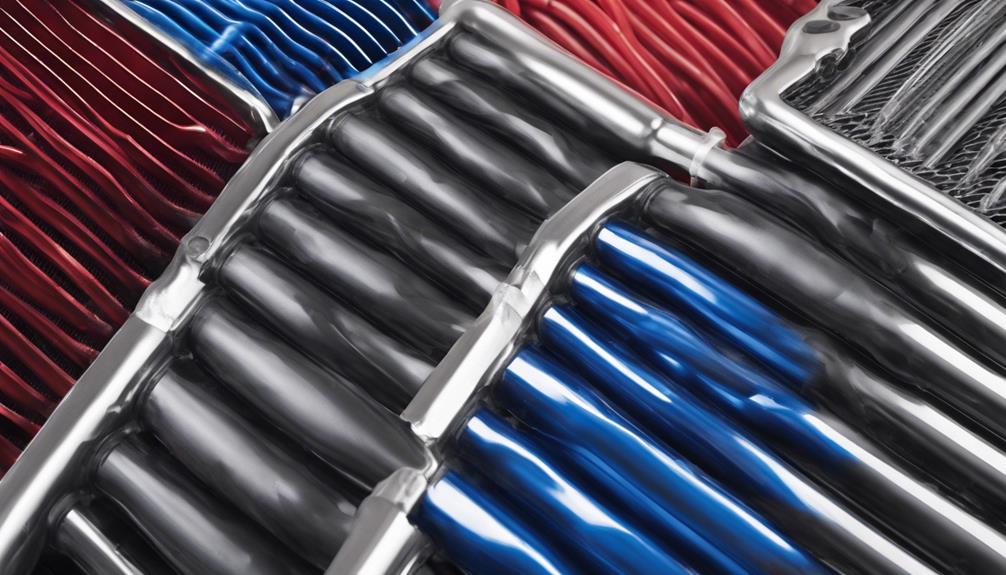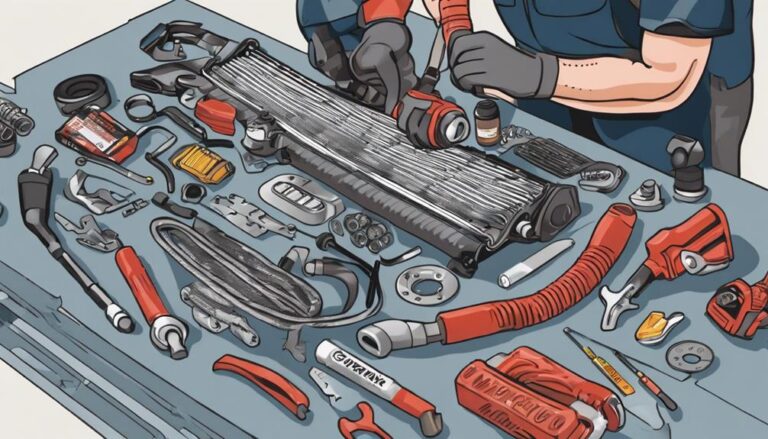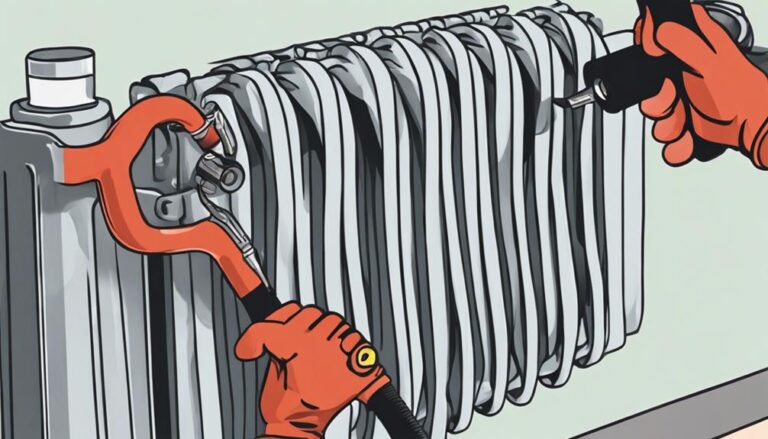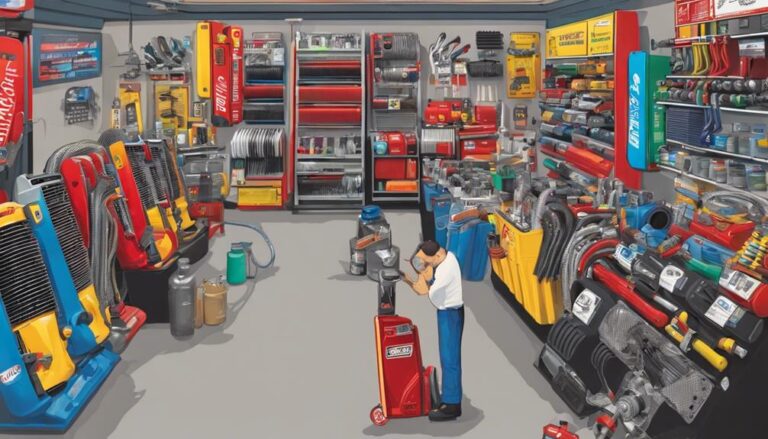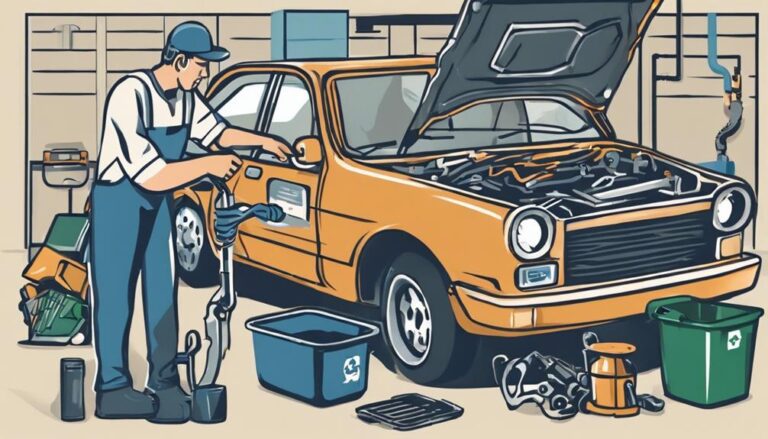Enhance Performance: 7 Radiator & Hose Upgrade Tips
So, you think your vehicle's performance is already at its peak? Think again. Upgrading your radiator and hoses could be the game-changer you never knew you needed.
From boosting efficiency to troubleshooting common issues, these upgrades could be the key to unleashing your vehicle's full potential. But where do you start?
Let's explore some expert tips to take your ride to the next level.
Key Takeaways
- Choose high-quality materials for radiators and hoses to improve cooling efficiency.
- Opt for the right radiator size to enhance performance by up to 30%.
- Upgrade to durable hoses for longevity and resistance to high temperatures.
- Select the appropriate thermostat and coolant for optimal cooling system function.
Benefits of Upgrading Radiator Materials
Upgrading to high-quality radiator materials greatly enhances heat dissipation and overall cooling efficiency. When considering radiator upgrades, it's essential to also pay attention to the condition and quality of your radiator hoses.
High-performance radiator hoses play an important role in maintaining the integrity of your cooling system. Quality radiator hoses are designed to withstand high temperatures and pressures, ensuring ideal coolant flow throughout the system. By upgrading to durable hoses made from materials like silicone or reinforced rubber, you can minimize the risk of leaks, cracks, or bursts that could lead to engine overheating or damage.
Additionally, premium radiator hoses are more resistant to wear and tear, offering increased longevity and reliability. When upgrading your radiator, investing in high-quality hoses to complement your new radiator materials is a wise choice for maximizing cooling performance and ensuring the efficiency of your vehicle's cooling system.
Importance of Hose Material Selection
Selecting the appropriate hose material for your radiator is important in ensuring the best performance and longevity of your cooling system. When choosing a hose material, consider the following factors:
- Durability: Silicone hoses are more durable and resistant to UV and chemicals compared to rubber hoses, making them ideal for long-term use.
- Temperature Resistance: Silicone hoses can withstand wider temperature ranges, making them suitable for high-performance applications where heat variations are common.
- Maintenance: Silicone hoses are easier to clean and maintain, contributing to their longevity and ensuring peak performance over time.
- Cost-Effectiveness: Despite being initially more expensive, silicone hoses prove to be cost-effective in the long run due to their durability and longevity, reducing the need for frequent replacements.
Performance Impact of Radiator Size
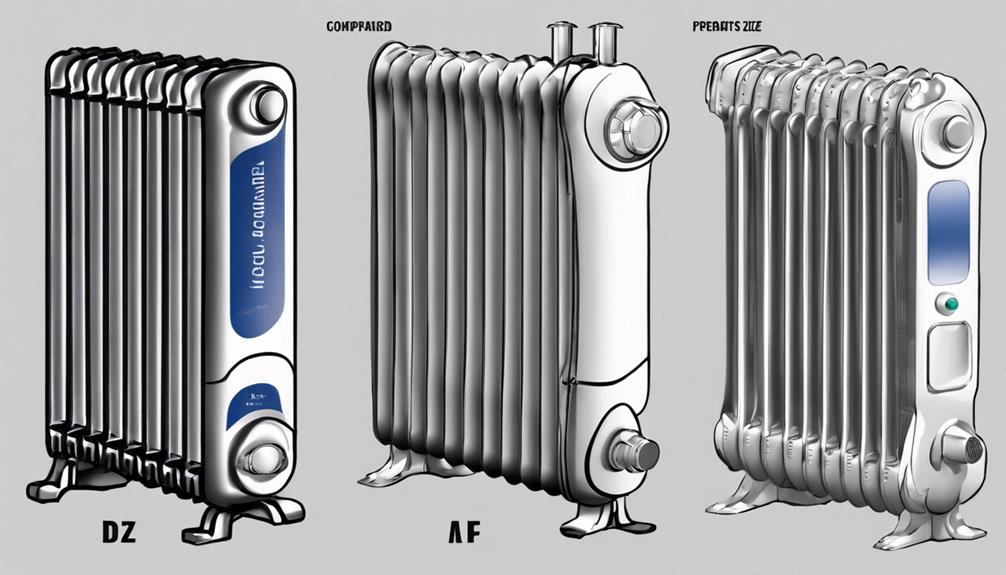
Choosing an appropriately sized radiator is essential for optimizing cooling performance and preventing overheating in high-demand situations. Upgrading to a larger radiator can increase cooling capacity by up to 30%, allowing for better heat dissipation and reducing the risk of overheating.
The radiator size directly impacts the overall cooling system's ability to maintain best operating temperatures. With a larger radiator, improved cooling efficiency can lead to better engine performance and longevity. It's important to choose the right radiator size to support increased cooling demands in high-performance applications.
A larger radiator provides more surface area for heat exchange, enabling the cooling system to effectively manage the heat generated by the engine. By upgrading to a larger radiator, you can enhance your vehicle's cooling capabilities, ensuring reliable performance even under extreme conditions.
Enhancing Cooling System Efficiency
When upgrading your radiator and hoses, you can considerably enhance the efficiency of your cooling system.
Performance radiators with improved heat dissipation capabilities can effectively manage heat, especially during high-demand driving scenarios.
Cooling System Maintenance
To enhance the efficiency of your vehicle's cooling system, conducting regular inspections of coolant hoses is essential. Here are four maintenance tips to keep your cooling system running smoothly:
- Check for Wear and Damage: Regularly check coolant hoses for any signs of wear, leaks, or damage to prevent potential cooling system issues.
- Verify Flexibility and Connections: Make sure hose flexibility and connections are in good condition to avoid leaks and maintain proper coolant flow.
- Address Any Abnormalities Promptly: Keep an eye out for discoloration, swelling, or hardening of silicone hoses, and address these issues promptly to prevent system failure.
- Secure Connections and Replace Worn Clamps: Ensure all hose connections are secure, and replace any worn clamps to prevent coolant leaks and overheating.
Radiator Upgrade Benefits
Enhance the efficiency of your vehicle's cooling system by exploring the benefits of upgrading your radiator. Upgrading radiators can greatly enhance heat dissipation efficiency by up to 30%, reducing the risk of engine overheating, especially under high-stress conditions.
Aftermarket radiators often boast larger core sizes, improving heat transfer capabilities. With improved radiator design, coolant temperatures can drop by 10-20 degrees Fahrenheit, enhancing overall engine performance.
Upgraded radiators are engineered to endure higher pressure levels, guaranteeing better reliability and durability. Consider coupling your radiator upgrade with a silicone hose upgrade for a thorough enhancement to your vehicle's cooling system.
Optimizing Hose Routing for Flow
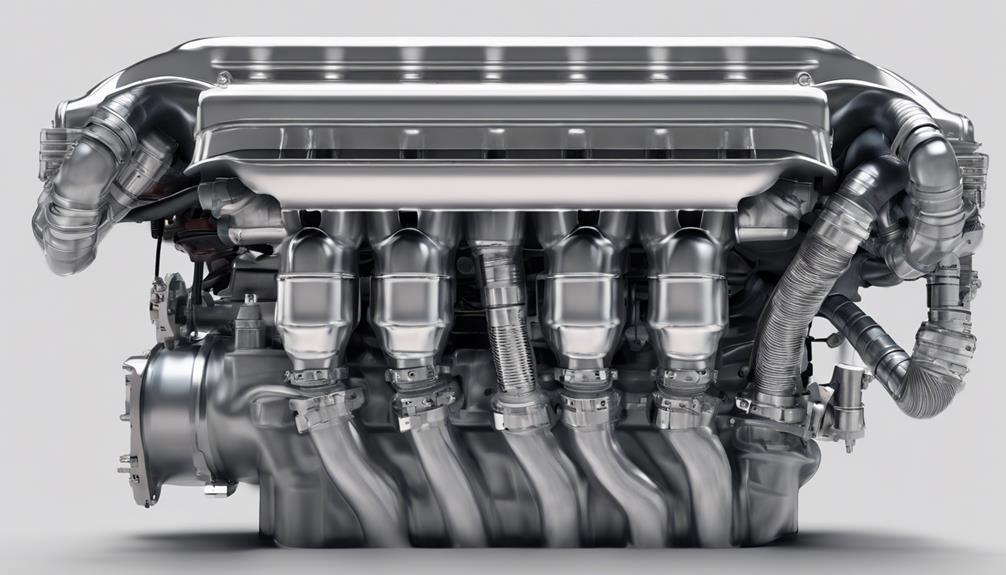
When optimizing hose routing for flow, consider efficient hose placement to prevent flow restrictions and make certain coolant circulates smoothly.
Avoid kinks, sharp bends, or obstacles that could hinder the coolant's path.
Strategic hose placement can enhance heat dissipation and maintain consistent engine temperature levels.
Efficient Hose Placement
For best coolant circulation efficiency, make sure hose routing is free of kinks, bends, or twists that impede fluid flow. Efficient hose placement plays a vital role in optimizing the performance of your radiator hose. To guarantee maximum efficiency, follow these guidelines:
- Direct Routing: Route hoses in a direct path without unnecessary loops to minimize flow restrictions.
- Secure Fastening: Use appropriate clamps and brackets to secure hoses in place, preventing movement that could lead to kinks.
- Avoid Sharp Edges: Position hoses away from sharp edges or hot surfaces that could cause damage and restrict flow.
- Equal Lengths: Maintain equal hose lengths when possible to promote balanced coolant distribution throughout the engine.
Flow Restriction Prevention
To optimize coolant flow and prevent flow restrictions in your radiator system, make sure that hose routing is free of sharp bends and kinks. Proper hose routing guarantees smooth coolant circulation, reducing the risk of blockages and overheating. Consider the following factors when organizing your hoses:
| Factor | Consideration | Importance |
|---|---|---|
| Hose Diameter | Choose the right size for flow | High |
| Hose Material | Opt for durable, heat-resistant materials | Medium |
| Hose Length | Keep it as short as possible | High |
| Hose Positioning | Away from heat sources & moving parts | High |
| Hose Flexibility | Guarantee flexibility without kinking | High |
Considerations for Thermostat Upgrades
Considering an upgrade for your thermostat can greatly enhance the cooling efficiency and performance of your engine. Upgraded thermostats play a vital role in maintaining the best operating temperature of your engine, especially in high-performance or modified vehicles. Here are some key considerations when contemplating thermostat upgrades:
- Opt for a high-performance thermostat: Choose a thermostat specifically designed to handle the demands of your engine, ensuring more efficient temperature regulation.
- Lower opening temperature: Consider a thermostat that opens at a lower temperature than the stock one to enhance cooling capabilities, especially in extreme conditions.
- Engine compatibility: Make sure the upgraded thermostat is compatible with your engine model and type for seamless integration and best performance.
- Driving conditions: Select a thermostat that can adapt to various driving conditions, providing consistent cooling performance under different loads or speeds.
Impact of Coolant Type on Performance
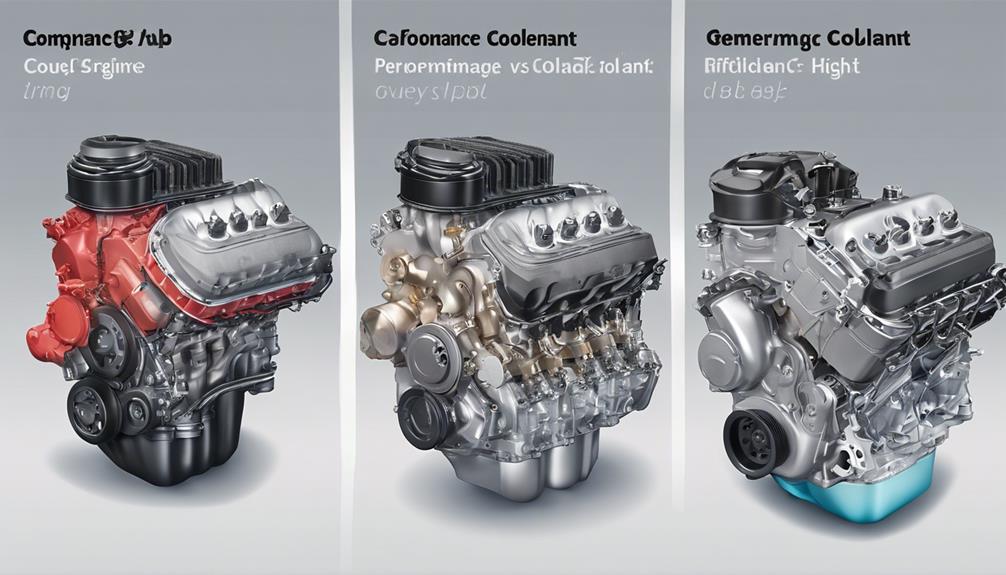
The choice of coolant type greatly influences the performance and efficiency of your cooling system. Coolant isn't just a liquid; it's an essential component that affects the heat transfer capabilities and corrosion protection properties of your system. Different coolant types impact how well your engine regulates temperature and overall system health.
Using the manufacturer's recommended coolant type is critical for optimizing your cooling system's performance. When selecting coolant, consider its compatibility with your coolant hoses, as using the wrong coolant can lead to overheating, corrosion, and potential damage to engine components. Proper coolant selection guarantees efficient heat dissipation and prolongs the lifespan of your coolant hoses.
Frequently Asked Questions
Do Silicone Boost Hoses Improve Performance?
Silicone boost hoses offer improved durability and exact fit installation, providing peace of mind during driving. While they do not offer significant measurable performance gains, they reduce the risk of hose swelling and blowouts compared to aluminum alternatives.
Should I Upgrade to Silicone Hoses?
You should upgrade to silicone hoses for improved performance. Silicone vs. rubber hoses offer greater durability, wider temperature tolerance, and easier maintenance. They are cost-effective long-term, needing proper installation for best function. Consider silicone's benefits.
Are Silicone Radiator Hoses Better Than Rubber?
Silicone radiator hoses offer superior heat tolerance compared to rubber, making them a better choice for high-performance vehicles. Their durability and resistance to UV, chemicals, and extreme temperatures guarantee longevity and reliability in demanding conditions.
Which Radiator Hose Should Be Hotter?
During radiator troubleshooting, remember that the upper radiator hose should be hotter than the lower one. This indicates proper coolant circulation. Monitoring this temperature variance guarantees efficient cooling system operation. Keep an eye on this for peak performance.
Conclusion
Improve your radiator and hoses to enhance your vehicle's performance and reliability. By choosing the right materials, optimizing flow, and considering upgrades like thermostats and coolant types, you can greatly enhance your cooling system's efficiency.
Don't overlook the impact of these upgrades on your vehicle's overall performance. Take the time to select and install upgraded silicone hoses properly to guarantee maximum benefits.
Your vehicle will thank you with improved performance and reliability.

